CLOSE
About Elements
TANAKA is a leading company in the field of precious metals.
Advanced materials and solutions that support societal progress, the development stories behind them, the voices of engineers, and our management philosophy and vision—
Elements is an online media platform that shares insights that lead to a better society and a more prosperous future for the planet under the slogan “Mastering Precious Metals.”

“Daisy” Apple’s new robot that eats iPhones and spits out recyclable parts
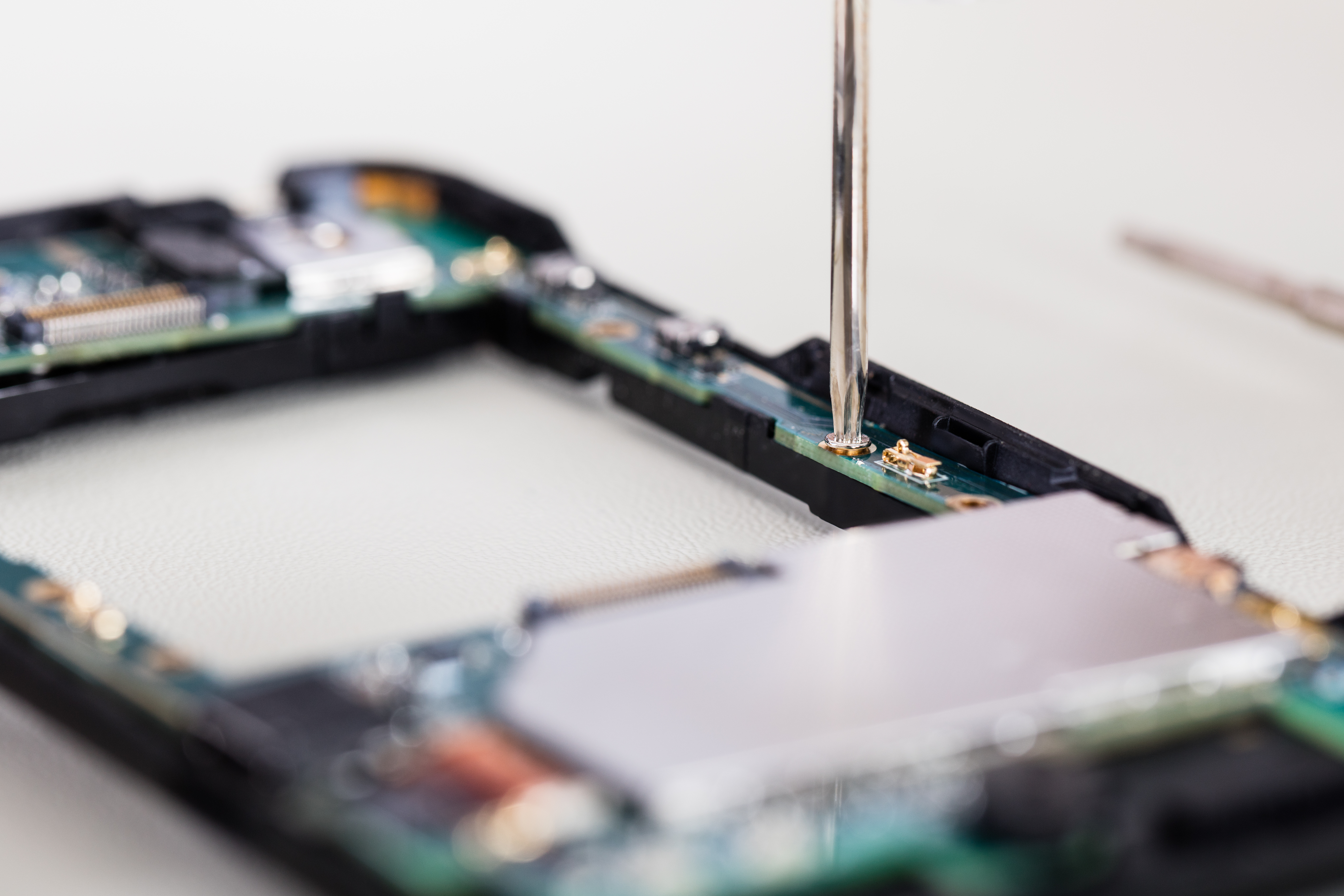
A two-minute journey through this machine renders a smartphone into recyclable materials.
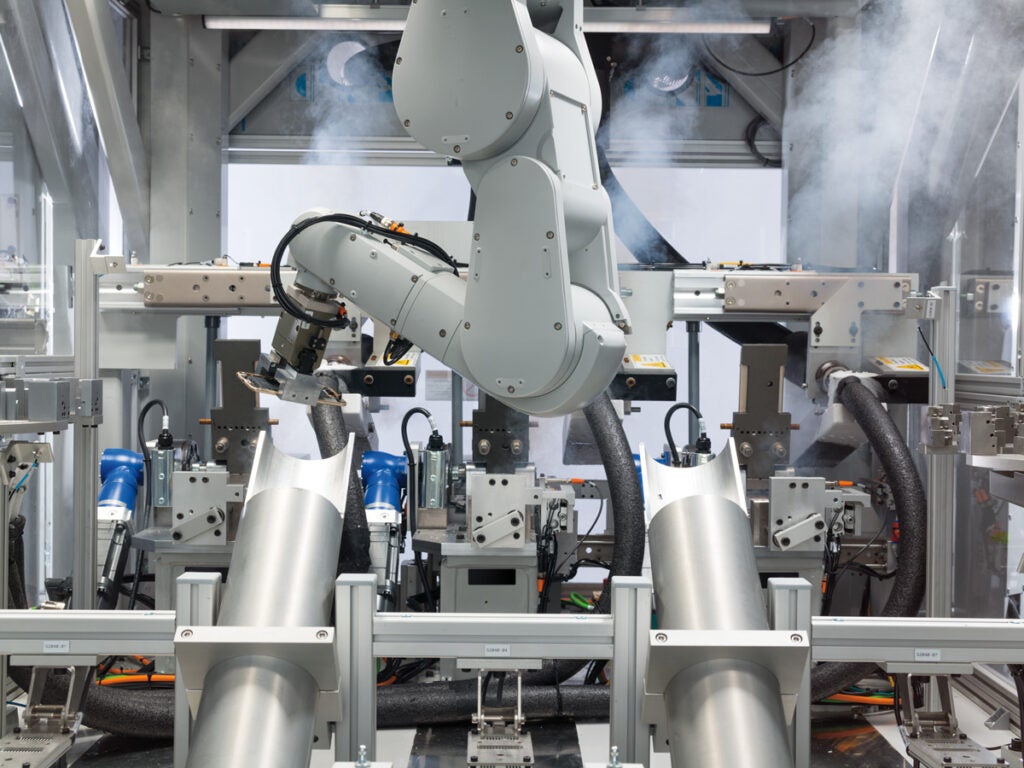
Apple Daisy robot
This is the battery-removal station in which cells are frozen to prevent thermal incidents, then dropped into aluminum buckets.
Apple
Inside a facility in Austin, Texas, there’s a huge box filled with hundreds of dead iPhones. It’s a salad of smashed screens and bent cases that spans nine different models—from iPhone 5 to the iPhone 8 plus, minus the plastic 5C (sorry, little guy). These devices are waiting for their chance to travel through Daisy, Apple’s new robotic disassembly system. Daisy salvages raw materials, so they can be recycled, rather than join the more than 35 million tons of e-waste that hit landfills in 2016.
Daisy addresses many needs for Apple—from sustainability to secrecy—but its explicit purpose is to separate the phone into discrete parts, which the company can send out for processing by its partners. Apple says this step spares the devices from ending up in the industrial shredders that recyclers often use to liberate valuable materials like precious metals and rare earth elements from their consumer electronics shells.
“It doesn’t make sense to recycle a phone the same way we recycle cars or a toaster,” says Lisa P. Jackson, Apple’s VP of environment, policy, and social initiative, and former EPA Administrator. She describes the typical path method for deconstructing phones. “The glass is crushed, the aluminum is sold into the scrap aluminum market, and the rest is shredded into this pile of plastics and metals. It has some value, but not a particularly high level. It’s not going back into an electronic.”
Shredding also makes recovering the rare earth magnets that drive the iPhone’s speaker nearly impossible. The magnets made of neodymium, praseodymium, and dysprosium can grab onto ferrous metals during the shred, then the valuable material gets smelted away during the refining process. Digging for these elements primarily takes place in China, where illegal mining operations and harmful methods like pit mining have proliferated. The price of these elements also fluctuates wildly, giving companies like Apple financial incentive to recoup as much as it can before buying it on the open market.
Sum of its parts
Apple first launched its quest to create a robotic iPhone destruction solution in 2016. Its intention was to recover recyclable materials inside the devices and ensure the destruction of proprietary parts like the processors so they don’t end up in what Apple calls “Frankenphones” on the secondary market. The first model was known as Liam, a 100-foot disassembly line with 29 individual robots, each tasked with a specific part of the deconstruction process. Daisy is different. It’s roughly 30-feet long and tears down phones with just five robotic arms, some of which were repurposed from the now-defunct Liams. From the outside, it looks like a machine that would assemble iPhones in a typical factory setting, but here it’s doing just the opposite.
Running at full capacity, Daisy can disassemble 200 iPhones in an hour. That’s considerably fewer than Liam, which could do 300 over the course of sixty minutes. However, Daisy handles nine different models; Liam only handled the iPhone 6. Daisy requires no change in the tools or downtime while it switches between versions.
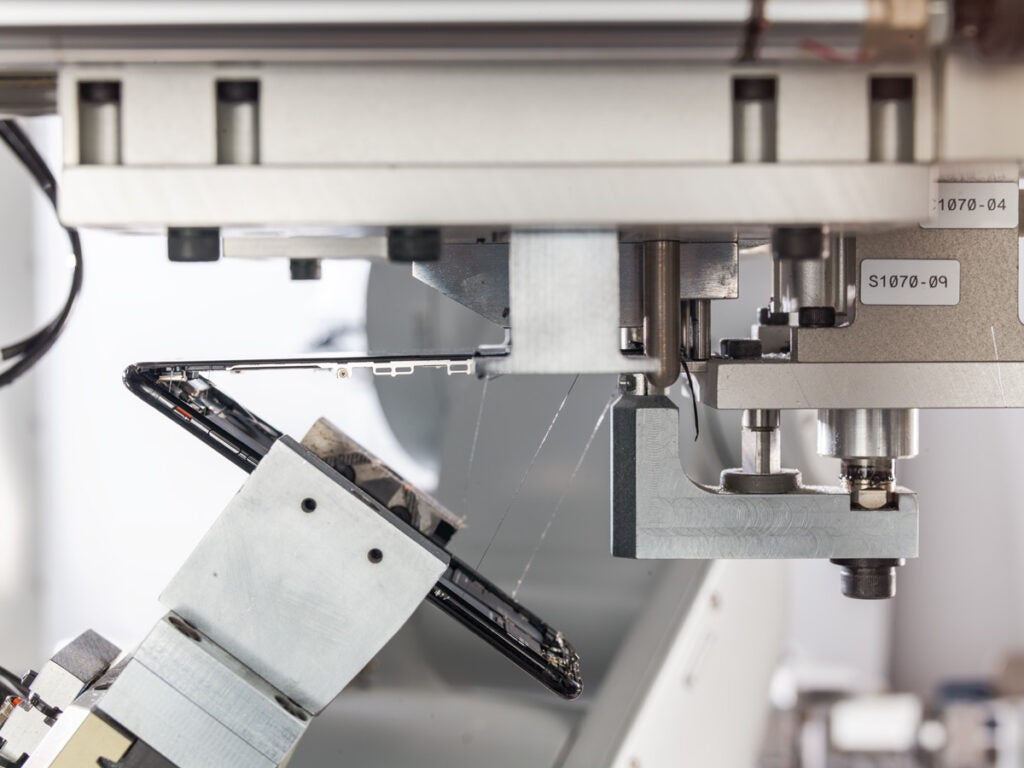
Apple Daisy robot
The robotic arm uses a wedge tool to peel the display away from the case and the rest of the components.
Apple
By prying the iPhones apart in-house, Apple can send off individual parts to its recycling partners, which Jackson says are eager to start processing the materials and turning them back into elements for new products. The ultimate—yet far off—goal is to approach a “closed loop” supply chain that pulls from renewable resources and recycled material, instead of constantly mining new materials.
This closed-loop system, which is sometimes referred to as a circular economy or cradle-to-cradle, isn’t a new concept in the consumer electronics world. There’s a lot of money to be made in replacing mined elements with recovered material. A recent study involving eight Chinese recycling plants, for example, showed that it was 13 times cheaper to extract metals from waste than to mine new ones.
Other metals, like cobalt, which is essential in the production of lithium-ion batteries, are currently enduring crazy market conditions due to the growing popularity of electric cars, which require enormous cells. The price has nearly quadrupled since 2015.
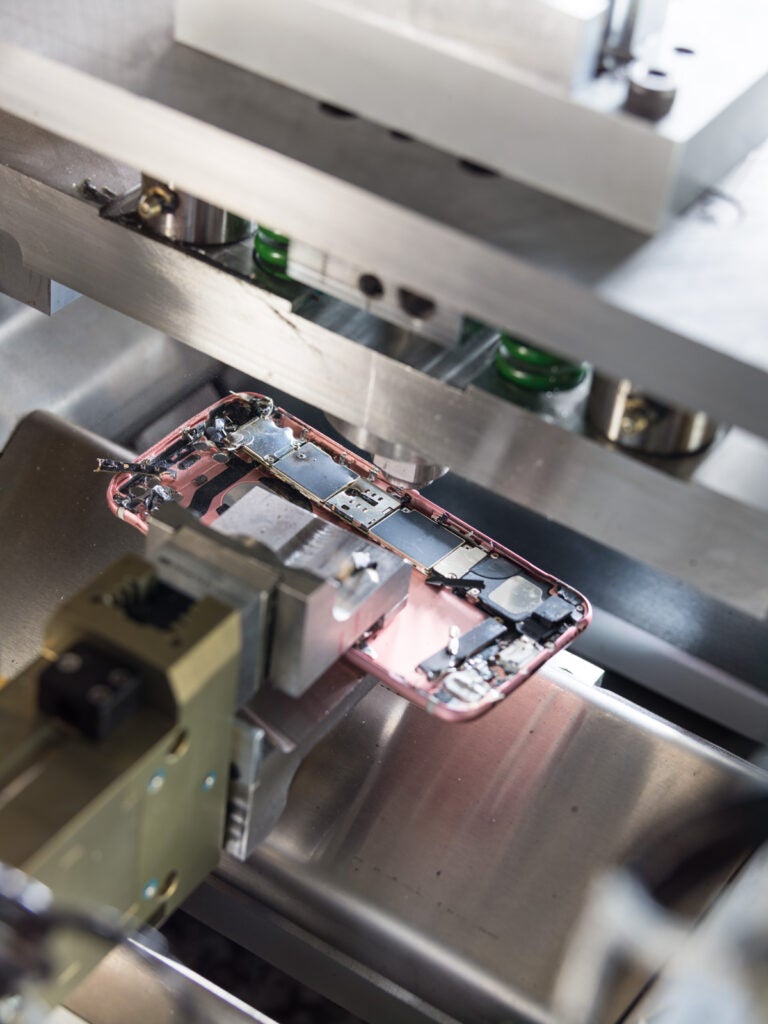
Apple Daisy Robot
The punching station pounds out screws that hold the components together. It’s loud—like someone pounding on a car door with a hammer—and leaves the cases looking rough.
Apple
Finding ways to connect the supply chain is a common goal for electronics manufacturers. In 2014, computer maker Dell was the first company to earn the Underwriter’s Laboratory closed-loop validation for its program to reuse plastic in various PC products. HP has been creating printer cartridges on a closed loop system for more than a decade. Samsung subscribes to the e-Stewards standards for e-waste and lays out its own list of requirements for its partners.
Apple already has a small-scale proof-of-concept product from the Liam project. The company created a version of the Mac Mini using the aluminum from recycled iPhone 6 cases. But that product is only for use within Apple facilities, and it’s unclear how many of them there are.
In terms of closing the loop on the iPhone, Apple has already achieved a small benchmark. Starting with iPhone 6 (and excluding the outlying iPhone X) 100 percent of the tin on the solder on the main logic board is recycled material, some of which Liam tore loose. The metal represents a very small percentage of the iPhone’s overall weight, which is emblematic of the gradual nature of this loop closing process.
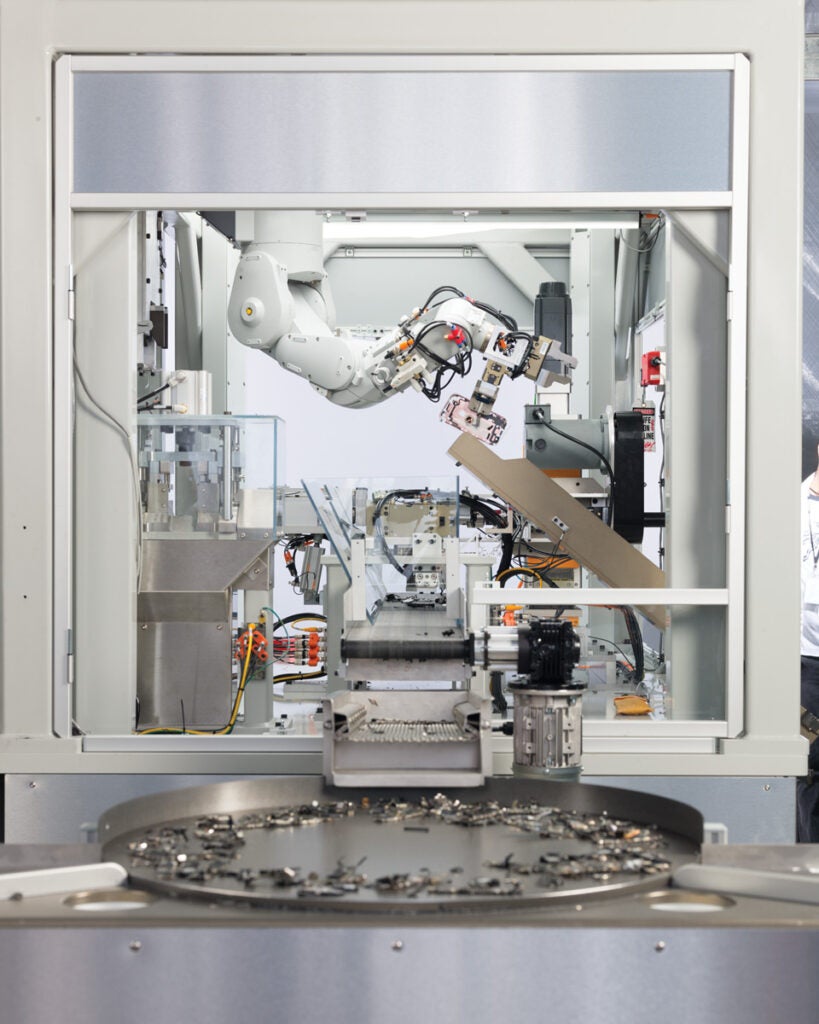
Apple Daisy Robot
Internal elements like camera and speaker modules end up on rotating sorting table after an auger dislodges them from the case.
Apple
Making the trip through Daisy
An iPhone’s journey through the Daisy line takes roughly two minutes and spans four stations.
A phone falls out of the hopper onto a conveyor belt where a computer-vision camera recognizes the devices and analyzes its orientation. An arm picks up the phones—it only picks up face-down units, while face-up phones go around again—to start the destructive demanufacturing process.
A separate robotic arm rotates the phone, allowing an optical sensor to evaluate whether or not the case is bent, which would require the machine to adjust tool alignment during the deconstruction process. A series of pins then drive the screen away from the case, then the arm uses a wedge tool to peel away the screen, which drops into a bin. Liam used a suction-based system for removing the screen, which didn’t work with smashed glass, which makes Daisy much better at dealing with severely damaged devices.
Another robotic arm picks up the phone, and delivers it to one of three battery removal stations. The system blasts the battery with -80 degree Celsius air to freeze it and free it. The bot then slaps the housing against a slab, and the battery falls out into an aluminum bucket.
Next is the punching station, where a violent stamper frees the screws that hold the phone together and its pieces in place. The number of punches varies from model to model, from 35 in the iPhone 5 all the way up to 54 in the iPhone 6 Plus.
The last robot on the line picks up the phone and shakes it to free any pieces that may have come loose during the punching process. Then a spinning auger follows a pre-programmed pattern to eject the main components, like the rear camera, main logic board, speaker, and haptic module. One final punch removes the steel in the Apple logo, as well as the ring that goes around the camera module.
The case, which by now looks like it has been shot full of bullet holes, falls into one of three model-specific bins. The plastic clips that hold pieces together remain on the aluminum cases; they’ll melt at a much lower temperature than the metal, so the synthetic is easy to separate later on.
At the end of the line, the company groups some parts together based on the materials it hopes to recover from them. The camera and the main logic board, for instance, both include copper and precious metals like gold, silver, and palladium.
Why pick apart the iPhones?
Apple’s primary concern with saving phones from the shredder is the quality of the material that comes out of its recycling process. When you shred a device, the recycled aluminum that comes out doesn’t meet Apple’s grade for making a new case. The metal Daisy spits out, however, can make the same grade without extra refining. Fewer steps and more usable metal both help reduce costs and waste.
The process also cuts down on the amount of mining that needs to happen in order to procure the required raw materials, which is a source of frustration when it comes to sustainability. Jackson uses tin as an example. “Tin is mined in some places where they may not have good control over labor and environmental standards,” says Jackson. “If we’re using recycled tin, we cut down on the risk that we’re working with people who are acting irresponsibly.” Countries like Nigeria and Indonesia, for instance, have endured illegal mines that take a harsh toll on both the environment and the workers tasked with pulling the metal out of the ground.
Mining, regardless of the metal, also produces large quantities of greenhouse gases. Eighty percent of the iPhone 8’s footprint, for instance, come from what Apple calls “production,” which includes the mining of raw materials. “Most things that are mined have to be processed, and that’s a pretty energy-intensive process,” says Jackson. “If you can take that out of the equation, then you start seeing carbon reductions.”
While the goal of no more mining is appealing, it’s also still a long way off. Jackson says it will likely be a decade or more before Apple doesn’t have to mine material from the ground to make its phones—and that’s barring any unforeseen changes in the design of the hardware.
The iPhone X, for one, throws an interesting wrench into Daisy’s plan for iPhone recycling because of its unique build and components. Apple started designing Daisy before iPhone X’s announcement, and the company is clearly aware that the X will pose considerably different challenges when it starts reaching its end of life. It has a glass back instead of a metal housing, and there’s a wireless charging coil inside. Then, of course, there’s the camera notch on the front, which adds additional components to the overall device.
To Apple’s benefit, this process also gives the company tighter control over its proprietary parts, which it says helps it combat fraud. “There are people who will sell you a fake iPhone,” says Jackson. “Either they need enclosures or they need parts from inside or to do repairs. Part of what has to happen is that our intellectual property—the parts that make the iPhone the iPhone—are destroyed.”
Daisies could pop up all over
The Daisy is operating in Austin isn’t a one-shot deal. There’s another already in place in Apple’s European distribution center, and the company is opening the technology for a free license so third parties could use it. That license, of course, would come with strict guidelines about the operation.
In Apple’s process for creating smartphones, Daisy is intended to be the very last step. Jackson is careful to emphasize the fact that phones only end up here when they can’t be refurbished or repaired using parts.
At the same time, the notion that Daisy is their final destination might help inform future design. Jackson says that Apple’s design process is still focused on making attractive and durable devices, but it’s trying to picture the device’s ultimate fate at the beginning of its design process. “I think there’s a lot more thinking that has to be done for all of our products,” says Jackson, especially if the company wants to extend this type of recycling into its other products like tablets and computers.
With this setup in place, Apple is ready to tear apart millions of iPhones a year, but the problem is getting them back from consumers in the first place. Apple has a program called GiveBack (formerly Renew), which offers users users gift cards in exchange for their phones if they’re not totally trashed. Phones that can’t be refurbished or reused don’t earn the user compensation, but Apple will send them off to Daisy for it to digest.
This article originally appeared on Popular Science
This article was written by Stan Horaczek from Popular Science and was legally licensed through the NewsCred publisher network. Please direct all licensing questions to legal@newscred.com.
![]()







